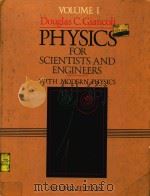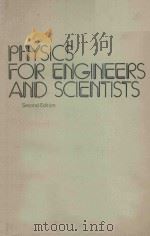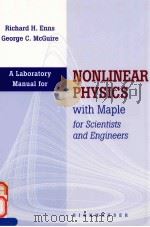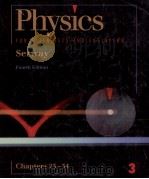《physics for scientists and engineers_with modern physics P1005》
| 作者 | 编者 |
|---|---|
| 出版 | 未查询到或未知 |
| 参考页数 | |
| 出版时间 | 没有确切时间的资料 目录预览 |
| ISBN号 | 无 — 求助条款 |
| PDF编号 | 820549358(仅供预览,未存储实际文件) |
| 求助格式 | 扫描PDF(若分多册发行,每次仅能受理1册) |
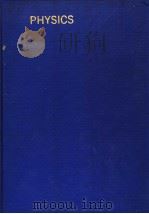
Chapter 1.INTRODUCTION: PHYSICS AND MEASUREMENT1
1.1Standards of Length, Mass, and Time2
1.2 Density and Atomic Mass5
1.3 Dimensional Analysis6
1.4 Conversion of Units7
1.5 Order of Magnitude Calculations8
1.6 Significant Figures9
1.7 Mathematical Notation9
1.8 Summary10
Chapter 2.VECTORS13
2.1Coordinate Systems and Frames of Reference13
2.2 Vectors and Scalars14
2.3 Some Properties of Vectors15
2.4 Components of a Vector and Unit Vectors17
2.5 Force21
2.6 Summary22
Chapter 3.MOTION IN ONE DIMENSION26
3.1Average Velocity26
3.2 Instantaneous Velocity27
3.3 Acceleration30
3.4 One-Dimensional Motion with Constant Acceleration32
3.5 Freely Falling Bodies35
3.6 Summary38
Chapter 4.MOTION IN TWO DIMENSIONS44
4.1The Displacement, Velocity, and Acceleration Vectors44
4.2 Motion in Two Dimensions with Constant Acceleration46
4.3 Projectile Motion48
4.4 Uniform Circular Motion54
4.5 Tangential and Radial Acceleration in Curvilinear Motion55
4.6 Relative Velocity and Relative Acceleration57
4.7 Summary60
Chapter 5.THE LAWS OF MOTION66
5.1Introduction to Classical Mechanics66
5.2 The Concept of Force66
5.3 Newton’s First Law and Inertial Frames68
5.4 Inertial Mass70
5.5 Newton’s Second Law71
5.6 Weight72
5.7 Newton’s Third Law73
5.8 Some Applications of Newton’s Laws74
5.9 Forces of Friction81
5.10 Summary84
Chapter 6.FORCES IN NATURE AND MORE APPLICATIONS OF NEWTON’S LAWS93
6.1Newton’s Universal Law of Gravitv93
6.2 Measurement of the Gravitational Constant94
6.3 Inertial and Gravitational Mass95
6.4 Weight and Gravitational Force97
6.5 Electrostatic Forces98
6.6 Nuclear Forces99
6.7 Newton’s Second Law Applied to Uniform Circular Motion100
6.8 Nonuniform Circular Motion102
6.9 Motion in Accelerated or Noninertial Frames103
6.10 Motion in the Presence of Resistive Forces105
6.11 Summary109
Chapter 7.WORK AND ENERGY114
7.1Introduction114
7.2 Work Done by a Constant Force115
7.3 The Scalar Product of Two Vectors116
7.4 Work Done by a Varying Force—One-Dimensional Case118
7.5 Work and Kinetic Energy123
7.6 Power127
7.7 Energy and the Automobile129
7.8 Summary132
Chapter 8.POTENTIAL ENERGY AND CONSERVATION OF ENERGY137
8.1Conservative and Nonconservative Forces137
8.2 Potential Energy139
8.3 Conservation of Mechanical Energy140
8.4 Gravitational Potential Energy Near the Earth’s Surface141
8.5 Nonconservative Forces and the Work-Energy Theorem144
8.6 Potential Energy Stored in a Spring145
8.7 Relation Between Conservative Forces and Potential Energy148
8.8 Energy Diagrams and Stability of Equilibrium149
8.9 Mass-Energy150
8.10 Conservation of Energy in General153
8.11 Energy From the Tides154
8.12 Summary156
Chapter 9.LINEAR MOMENTUM AND COLLISIONS163
9.1Linear Momentum and Impulse163
9.2 Conservation of Linear Momentum for a Two-Particle System167
9.3 Collisions169
9.4 Collisions in One Dimension170
9.5 Two-Dimensional Collisions173
9.6 The Center of Mass175
9.7 Motion of a System of Particles178
9.8 Rocket Propulsion180
9.9 Summary182
Chapter 10ROTATION OF A RIGID BODY ABOUT A FIXED AXIS189
10.1 Angular Velocity and Angular Acceleration189
10.2 Rotational Kinematics: Rotational Motion with Constant Angular Acceleration191
10.3 Relationships Between Angular and Linear Quantities192
10.4 Rotational Kinetic Energy194
10.5 Calculation of Moments of Inertia for Rigid Bodies196
10.6 Torque199
10.7 Relationship Between Torque and Angular Acceleration200
10.8 Work and Energy in Rotational Motion202
10.9 Summary205
Chapter 11.ANGULAR MOMENTUM AND TORQUE AS VECTOR QUANTITIES211
11.1The Vector Product and Torque211
11.2 Angular Momentum of a Particle214
11.3 Angular Momentum and Torque for a System of Particles216
11.4 Conservation of Angular Momentum219
11.5 The Motion of Gyroscopes and Tops222
11.6 Rolling Motion of a Rigid Body225
11.7 Angular Momentum as a Fundamental Quantity227
11.8 Summarv229
Chapter 12.STATIC EQUILIBRIUM OF A RIGID BODY236
12.1The Conditions of Equilibrium of a Rigid Body236
12.2 The Center of Gravity240
12.3 Examples of Rigid Bodies in Static Equilibrium241
12.4 Summary244
Chapter 13.OSCILLATORY MOTION250
13.1Simple Harmonic Motion250
13.2 Mass Attached to a Spring254
13.3 Energy of the Simple Harmonic Oscillator259
13.4 The Pendulum261
13.5 Comparing Simple Harmonic Motion With Uniform Circular Motion264
13.6 Damped Oscillations266
13.7 Forced Oscillations267
13.8 Summary269
Chapter 14.THE LAW OF UNIVERSAL GRAVITATION276
14.1Kepler’s Laws276
14.2 The Law of Universal Gravitation and the Motion of Planets277
14.3 The Gravitational Field281
14.4 Gravitational Potential Energy282
14.5 Energy Considerations in Planetary and Satellite Motion284
14.6 The Gravitational Force Between an Extended Body and a Particle287
14.7 Gravitational Force Between a Particle and a Spherical Mass288
14.8 Derivation of the Gravitational Effect of a Spherical Mass Distribution290
14.9 Summary292
Chapter 15.MECHANICS OF SOLIDS AND FLUIDS297
15.1States of Matter297
15.2 Elastic Properties of Solids298
15.3 Density and Pressure302
15.4 Variations of Pressure with Depth303
15.5 Pressure Measurements305
15.6 Buoyant Forces and Archimedes’ Principle305
15.7 Fluid Dynamics and Bernoulli’s Equation307
15.8 Other Applications of Bernoulli’s Equation311
15.9 Energy from the Wind311
15.10 Summary313
Chapter 16.TEMPERATURE, THERMAL EXPANSION AND IDEAL GASES319
16.1Temperature and the Zeroth Law of Thermodynamics319
16.2 Thermometers and Temperature Scales320
16.3 The Constant-Volume Gas Thermometer and the Kelvin Scale321
16.4 The Celsius, Fahrenheit, and Rankine Temperature Scales323
16.5 Thermal Expansion of Solids and Liquids326
16.6 Macroscopic Description of an Ideal Gas329
16.7 Summary331
Chapter 17.HEAT AND THE FIRST LAW OF THERMODYNAMICS335
17.1Heat and Thermal Energy336
17.2 Heat Capacity and Specific Heat336
17.3 Latent Heat339
17.4 Heat Transfer341
17.5 The Mechanical Equivalent of Heat345
17.6 Work and Heat in Thermodynamic Processes345
17.7 The First Law of Thermodynamics347
17.8 Some Applications of the First Law of Thermodynamics350
17.9 Summary352
Chapter 18.THE KINETIC THEORY OF GASES359
18.1Molecular Model for the Pressure of an Ideal Gas359
18.2 Molecular Interpretation of Temperature361
18.3 Heat Capacity of an Ideal Gas363
18.4 Adiabatic Process for an Ideal Gas366
18.5 The Equipartition of Energy367
18.6 Distribution of Molecular Speeds370
18.7 Mean Free Path372
18.8 Van der Waals’ Equation of State374
18.9 Summary376
Chapter 19.HEAT ENGINES, ENTROPY, AND THE SECOND LAW OF THERMODYNAMICS380
19.1Heat Engines and the Second Law of Thermodynamics381
19.2 Reversible and Irreversible Processes382
19.3 The Carnot Engine384
19.4 The Absolute Temperature Scale387
19.5 The Gasoline Engine387
19.6 Degradation of Energy389
19.7 Entropy390
19.8 Entropy Changes in Irreversible Processes393
19.9 Energy Conversion and Thermal Pollution395
19.10 Summary397
Chapter 20.ELECTRIC FIELDS402
20.1Introduction402
20.2 Properties of Electric Charges403
20.3 Insulators and Conductors404
20.4 Coulomb’s Law406
20.5 The Electric Field409
20.6 Electric Field of a Continuous Charge Distribution412
20.7 Electric Field Lines415
20.8 Motion of Charged Particles in a Uniform Electric Field417
20.9 The Oscilloscope419
20.10 Summary420
Chapter 21.GAUSS’ LAW428
21.1Electric Flux428
21.2 Gauss’ Law431
21.3 Application of Gauss’ Law to Charged Insulators433
21.4 Conductors in Electrostatic Equilibrium436
21.5 Experimental Proof of Gauss’ Law and Coulomb’s Law438
21.6 Derivation of Gauss’ Law439
21.7 Summary440
Chapter 22.ELECTRIC POTENTIAL444
22.1Potential.Difference and Electric Potential444
22.2 Potential Differences in a Uniform Electric Field446
22.3 Electric Potential and Potential Energy Due to Point Charges448
22.4 Electric Potential Due to Continuous Chargc Distributions450
22.5 Obtaining E From the Electric Potential453
22.6 Potential of a Charged Conductor455
22.7 Applications of Electrostatics459
22.8 Summary462
Chapter 23.CAPACITANCE AND DIELECTRICS469
23.1Definition of Capacitance469
23.2 Calculation of Capacitance470
23.3 Combinations of Capacitors472
23.4 Energy Stored in a Charged Capacitor475
23.5 Capacitors with Dielectrics477
23.6 Electric Dipole in an External Electric Field481
23.7 An Atomic Description of Dielectrics482
23.8 Summary485
Chapter 24.CURRENT AND RESISTANCE492
24.1Electric Current and Current Density492
24.2 Resistance and Ohm’s Law494
24.3 The Resistivity of Different Conductors497
24.4 Electrical Energy and Power499
24.5 A Model for Electrical Conduction501
24.6 Conduction in Semiconductors and Insulators504
24.7 Semiconductor Devices507
24.8 Summary509
Chapter 25.DIRECT CURRENT CIRCUITS514
25.1Electromotive Force514
25.2 Resistors in Series and in Parallel516
25.3 Kirchhoff’s Rules519
25.4 RC Circuits522
25.5 Measurements of Resistance526
25.6 The Potentiometer528
25.7 Household Wiring and Electrical Safety528
25.8 Summary530
Chapter 26.MAGNETIC FIELDS536
261Introduction536
26.2 Definition and Properties of the Magnetic Field537
26.3 Magnetic Force on a Current-Carrying Conductor540
26.4 Torque on a Current Loop in a Uniform Magnetic Field543
26.5 Mofion of a Charged Particle in a Magnetic Field547
26.6 Applications of the Motion of Charged Particles in a Magnetic Field549
26.7 The Hall Effect552
26.8 Summary554
Chapter 27.SOURCES OF THE MAGNETIC FIELD560
27.1The Biot-Savart Law560
27.2 The Magnetic Force Between Two Parallel Conductors564
27.3 Ampere’s Law565
27.4 The Magnetic Field of a Solenoid568
27.5 Magnetic Flux570
27.6 Gauss’ Law in Magnetism571
27.7 The Magnetic Field Along the Axis of a Solenoid572
27.8 Displacement Current and the Generalized Amperes Law573
27.9 Summary574
Chapter 28.FARADAY’S LAW582
28.1Faraday’s Law of Induction582
28.2 Motional emf584
28.3 Lenz’s Law587
28.4 Induced emfs and Electric Fields590
28.5 Generators and Motors591
28.6 Eddy Currents593
28.7 Maxwell’s Wonderful Equations595
28.8 Summary596
Chapter 29.INDUCTANCE603
29.1Self-Inductance603
29.2 RL Circuits605
29.3 Energy in a Magnetic Field608
29.4 Mutual Inductance609
29.5 Oscillation in an LC Circuit611
29.6 The RLC Circuit615
29.7 Summary617
Chapte- 30.MAGNETISM IN MATTER624
30.1The Magnetization of a Substance624
30.2 The Magnetic Moment of Atoms629
30.3 Paramagnetism630
30.4 Diamagnetism632
30.5 Ferromagnetism634
30.6 Summary637
Chapter 31.ALTERNATING CURRENT CIRCUITS641
31.1Resistors in an ac Circuit641
31.2 Inductors in an ac Circuit642
31.3 Capacitors in an ac Circuit644
31.4 The RLC Series Circuit646
31.5 Power in an ac Circuit649
31.6 Resonance in a Series RLC Circuit650
31.7 Filter Circuits653
31.8 The Transformer and Power Transmission654
31.9 Summary656
Chapter 32.WAVE MOTION662
32.1Introduction662
32.2 Types of Waves663
32.3 One-Dimensional Traveling Waves665
32.4 Superposition and Interference of Waves667
32.5 The Velocity of Waves on Strings669
32.6 Reflection and Transmission of Waves671
32.7 Harmonic Waves673
32.8 Energy Transmitted by Harmonic Waves on Strings677
32.9 The Linear Wave Equation678
32.10 Summary679
Chapter 33.SOUND WAVES683
33.1Velocity of Sound Waves683
33.2 Harmonic Sound Waves687
33.3 Energy and Intensity of Harmonic Sound Waves688
33.4 Spherical and Planar Waves690
33.5 The Doppler Effect692
33.6 Summary696
Chapter 34.SUPERPOSITION AND STANDING WAVES700
34.1Superposition and Interference of Harmonic Waves701
34.2 Standing Waves703
34.3 Standing Waves in a String Fixed at Both Ends706
34.4 Resonance709
34.5 Standing Waves in Air Columns710
34.6 Standing Waves in Rods and Plates713
34.7 Beats: Interference in Time713
34.8 Complex Waves716
34.9 Summary717
Chapter 35.ELECTROMAGNETIC WAVES722
35.1Maxwell’s Equations and Hertz’s Discoveries723
35.2 Plane Electromagnetic Waves724
35.3 Energy and Momentum of Electromagnetic Waves728
35.4 Radiation from an Infinite Current Sheet731
35.5 The Production of Electromagnetic Waves by an Antenna733
35.6 The Specttum of Electromagnetic Waves735
35.7 Summary737
Chapter 36.THE NATURE OF LIGHT AND THE LAWS OF GEOMETRIC OPTICS742
36.1The Nature of Light742
36.2 Measurements of the Speed of Light744
36.3 Huygens’ Principle745
36.4 The Ray Approximation in Geometric Optics746
36.5 The Laws of Reflection and Refraction at Planar Surfaces747
36.6 The Index of Refraction749
36.7 Dispersion and Prisms751
36.8 Huygens’ Principle Applied to Reflection and Refraction753
36.9 Total Internal Reflection754
36.10 Light Intensity756
36.11 Fermat’s Principle758
36.12 Summary759
Chapter 37.GEOMETRIC OPTICS764
37.1Images Formed by Planar Mirrors764
37.2 Images Formed by Spherical Mirrors765
37.3 Ray Diagrams for Mirrors769
37.4 Images Formed by Refraction770
37.5 Thin Lenses773
37.6 Lens Aberrations779
37.7 The Camera780
37.8 The Eye781
37.9 The Simple Magnifier783
37.10 The Compound Microscope and the Telescope784
37.11 Summary786
Chapter 38.INTERFERENCE OF LIGHT WAVES791
38.1Conditions for Interference791
38.2 Young’s Double-Slit Experiment792
38.3 Intensity Distribution of the Double-Slit Interference Pattern794
38.4 Phasor Addition of Waves797
38.5 Change of Phase Due to Reflection801
38.6 Interference in Thin Films803
38.7 The Michelson Interferometer806
38.8 Summary807
Chapter 39.DIFFRACTION AND POLARIZATION812
39.1Introduction to Diffraction812
39.2 Fraunhofer Diffraction of a Single Slit814
39.3 Resolution of a Single Slit and Circular Apertures817
39.4 The Diffraction Grating820
39.5 Diffraction of X-rays by Crystals822
39.6 Polarization of Light Waves823
39.7 Summary829
Chapter 40.SPECIAL THEORY OF RELATIVITY835
40.1Introduction835
40.2 The Principle of Relativity836
40.3 Evidence that Galilean Transformations are Incorrect837
40.4 Einstein’s Postulates838
40.5 The Lorentz Transformation839
40.6 Consequences of the Lorentz Transformation842
40.7 Simultaneity and the Relativity of Time847
40.8 Relativistic Momentum848
40.9 Relativistic Energy849
40.10 Confirmations and Consequences of Relativity Theory852
40.11 Summary853
Chapter 41.QUANTUM PHYSICS857
41.1Blackbody Radiation and Planck’s Hypothesis858
41.2 The Photoelectric Effect860
41.3 The Compton Effect863
41.4 Atomic Spectra866
41.5 The Bohr Theory of Hydrogen867
41.6 Photons and Electromagnetic Waves872
41.7 The Wave Properties of Particles873
41.8 The Wave Function875
41.9 The Uncertainty Principle876
41.10 Lasers and Atomic Transitions877
41.11 Summary880
Chapter 42.WAVE MECHANICS886
42.1Introduction to Wave Mechanics886
42.2 The Wave Nature of Electrons888
42.3 A Particle in a Box891
42.4 The Schrodinger Equation895
42.5 Other Applications of the Schrodinger Equation899
42.6 The Particle in a Three-Dimensional Box905
42.7 Summary907
Chapter 43.ATOMIC AND MOLECULAR PHYSICS913
43.1The Hydrogen Atom914
43.2 The Wave Functions for Hydrogen916
43.3 The Quantum Numbers919
43.4 The Normal Zeeman Effect922
43.5 Electron Spin924
43.6 Total Angular Momentum926
43.7 The Exclusion Principle and the Periodic Table928
43.8 The Spectra of Atoms923
43.9 The Energy and Spectra of Molecules935
43.10 Summary940
Chapter 44.NUCLEAR STRUCTURE947
44.1Some Properties of Nuclei947
44.2 Binding Energy and Nuclear Forces953
44.3 Nuclear Models955
44.4 Radioactivity958
44.5 The Decay Processes961
44.6 Nuclear Reactions967
44.7 Summary969
Chapter 45.NUCLEAR ENERGY AND NUCLEAR INTERACTIONS WITH MATTER977
45.1Collisions977
45.2 Interactions Involving Neutrons979
45.3 Nuclear Fission981
45.4 Nuclear Reactors983
45.5 Nuclear Fusion986
45.6 The Interaction of Particles with Matter992
45.7 Radiation Damage in Matter996
45.8 Radiation Detectors997
45.9 Summary1000
《physics for scientists and engineers_with modern physics P1005》由于是年代较久的资料都绝版了,几乎不可能购买到实物。如果大家为了学习确实需要,可向博主求助其电子版PDF文件。对合法合规的求助,我会当即受理并将下载地址发送给你。
高度相关资料
-
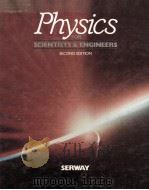
- PHYSICS FOR SCIENTISTS & ENGINEERS 2nd edition
- 1986 Raymond A.Serway
-
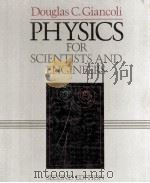
- PHYSICS FOR SCIENTISTS AND ENGINEERS SECOND EDITION
- 1988 Prentice-Hall International Limited
-
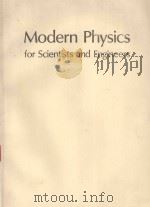
- MODERN PHYSICS FOR SCIENTISTS AND ENGIVEERS
- 1992 PRENTICE HALL
-
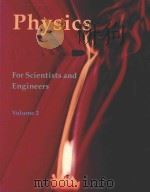
- PHYSICS FOR SCIENTISTS AND ENGINEERS THIRD EDITION VOLUME 2
- 1991 WORTH PUBLISHERS
-

- PHYSICS FOR SCIENTISTS AND ENGINEERS THIRD EDITION
- 1991 WORTH PUBLISHERS
-
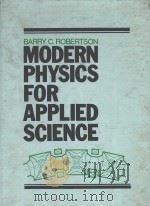
- MODERN PHYSICS FOR APPLIED SCIENCE
- 1981 JOHN WILEY & SONS
-

- BERSON AND MODERN PHYSICS
- 1971 D.REIDEL PUBLISHING COMPANY
-
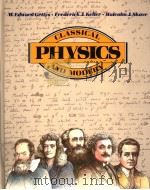
- PHYSICS CLASSICAL AND MODERN
- 1989 MCGRAW-HILL BOOK COMPANY
-
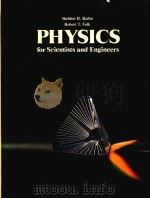
- PHYSICS FOR SCIENTISTS AND ENGINEERS
- 1982 PRENTICE-HALL
-
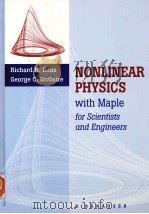
- NONLINEAR PHYSICS WITH MAPLE FOR SCIENTISTS AND ENGINEERS
- 1997 BIRKHAUSER
提示:百度云已更名为百度网盘(百度盘),天翼云盘、微盘下载地址……暂未提供。➥ PDF文字可复制化或转WORD

